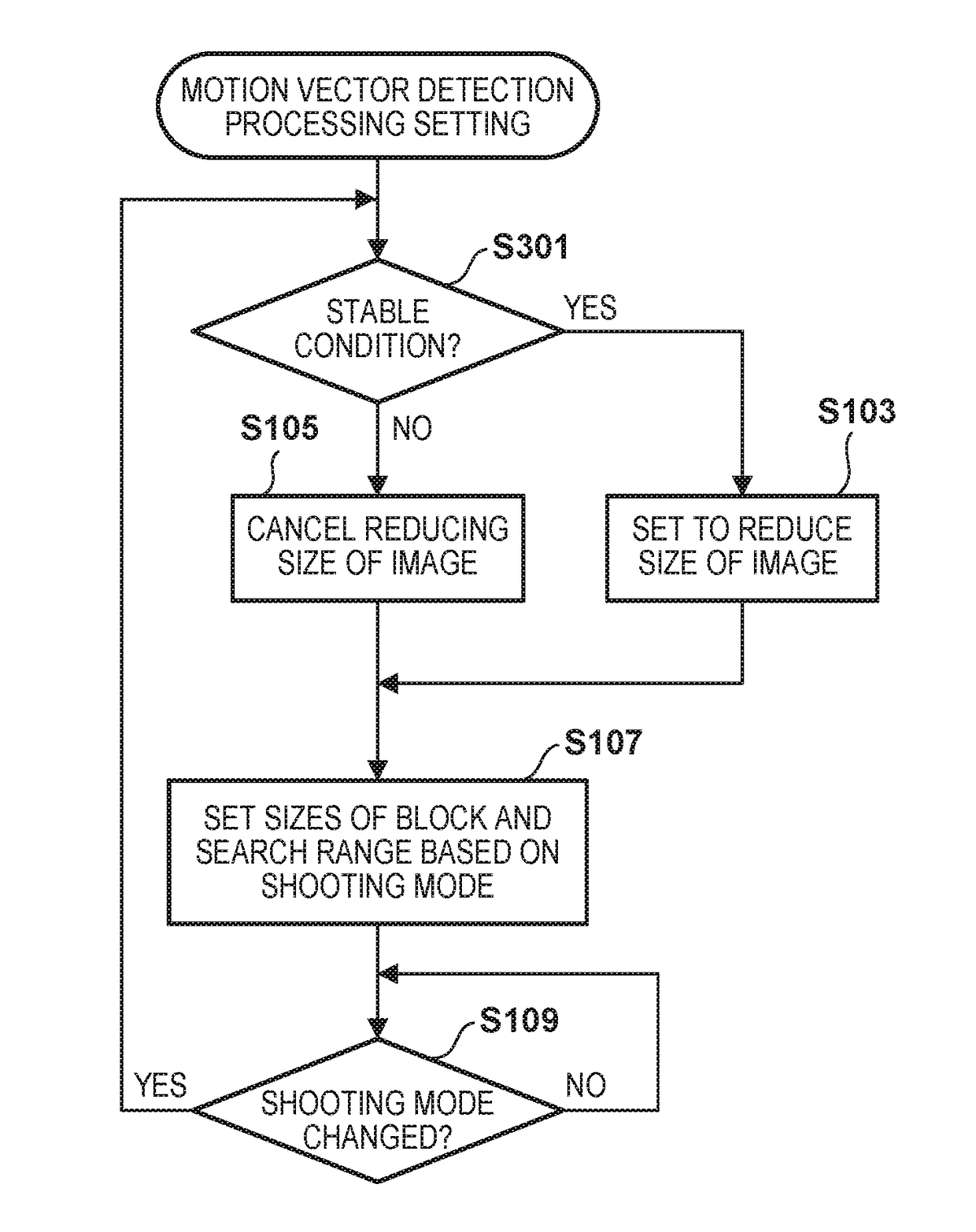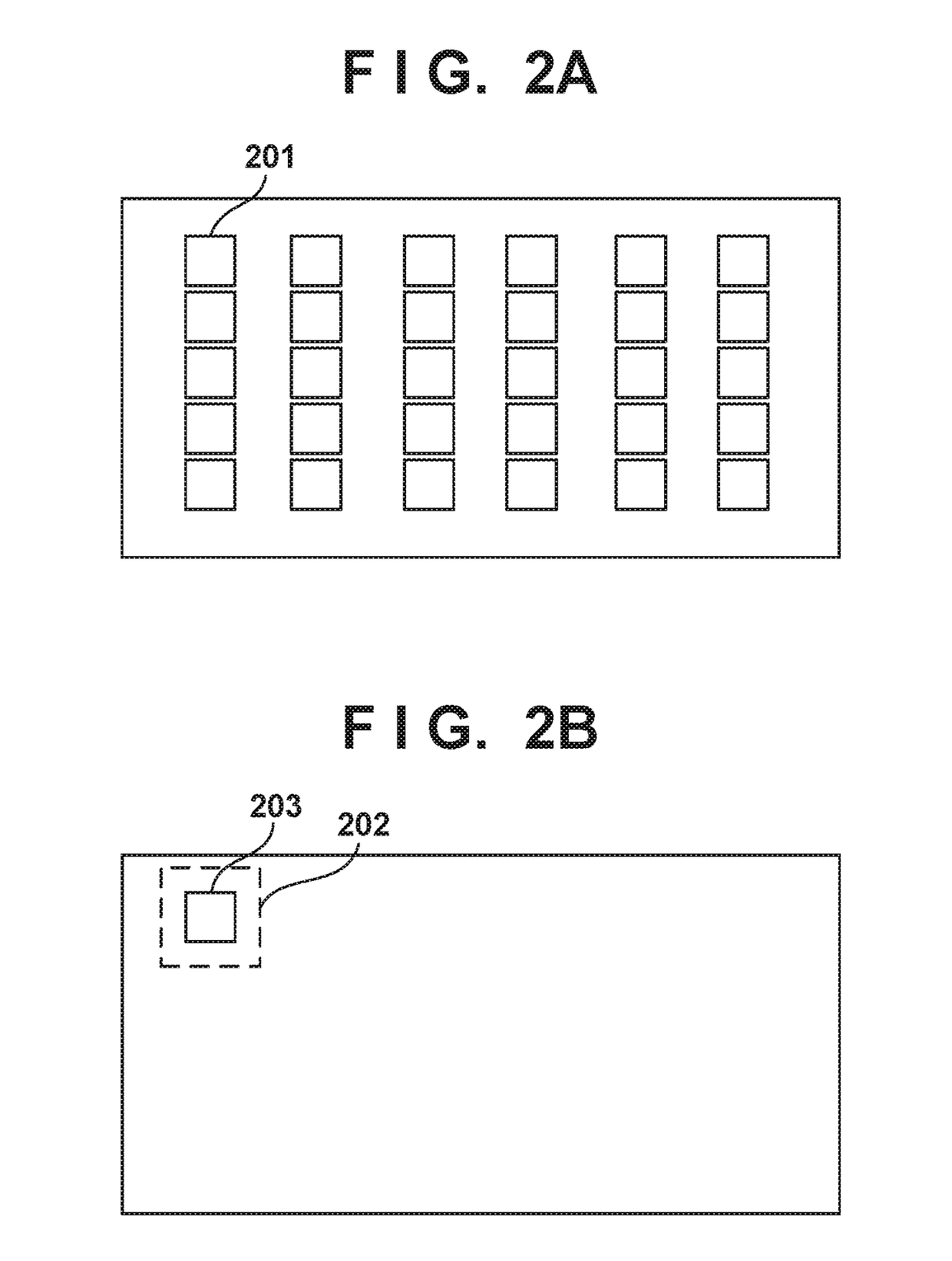Motion vector detection device, method for controlling the same, and image capturing apparatus
- Summary
- Abstract
- Description
- Claims
- Application Information
AI Technical Summary
Benefits of technology
Problems solved by technology
Method used
Image
Examples
first embodiment
[0022]FIG. 1 is a block diagram illustrating an example of a functional configuration of a digital camera according to the present embodiment. A zoom unit 101, an aperture / shutter unit 103, an image blur correction unit 105, and a focus unit 107 constitute an imaging optical system. The imaging optical system may be of an exchangeable lens type or a non-detachable type.
[0023]The zoom unit 101 includes a lens for changing a field angle (focal length) of the imaging optical system, and is driven by a zoom drive control unit 102. The aperture / shutter unit 103 includes an aperture having a mechanical shutter function, and is driven by an aperture / shutter drive control unit 104. The image blur correction unit 105 (referred to also as “correction unit”) includes a shift lens, and is driven by an image blur correction control unit 106. Note that the present embodiment performs optical image-blur correction in which the shift lens is driven, but an imaging element may be driven. Furthermore...
second embodiment
[0081]Hereinafter, a second embodiment according to the present invention will be described. In the first embodiment, motion vector detection processing is controlled by changing settings based on a use of a motion vector. In the present embodiment, motion vector detection processing is controlled by changing settings based on the detection of specific movement, specifically, large movement in a specific direction, of an apparatus provided with the motion vector detection device.
[0082]In the present embodiment, it is assumed that the apparatus provided with the motion vector detection device is the digital camera 100 described in the first embodiment, and descriptions of the configurations of the digital camera 100 are omitted. Furthermore, the following will describe a configuration for changing a setting in accordance with detection of a panning operation, which serves as an example of the large movement in a specific direction of the apparatus provided with the motion vector dete...
third embodiment
[0093]Hereinafter, a third embodiment of the present invention will be described. In the present embodiment, motion vector detection processing is controlled by changing settings based on the detection of specific movement using an apparatus provided with the motion vector detection device, specifically, sufficiently small movement. In the present embodiment, it is assumed that the apparatus provided with the motion vector detection device is the digital camera 100 described in the first embodiment, and descriptions of configurations of the digital camera 100 are omitted.
[0094]FIG. 7 is a flowchart illustrating an overview of an operation for setting motion vector detection processing according to the present embodiment. In FIG. 7, the same reference numerals as those of FIG. 4 are given to common processing with the first embodiment.
[0095]In step S301, the system control unit 118 determines whether or not the digital camera 100 is in a stable condition, based on the amount of blur ...
PUM
 Login to View More
Login to View More Abstract
Description
Claims
Application Information
 Login to View More
Login to View More - R&D
- Intellectual Property
- Life Sciences
- Materials
- Tech Scout
- Unparalleled Data Quality
- Higher Quality Content
- 60% Fewer Hallucinations
Browse by: Latest US Patents, China's latest patents, Technical Efficacy Thesaurus, Application Domain, Technology Topic, Popular Technical Reports.
© 2025 PatSnap. All rights reserved.Legal|Privacy policy|Modern Slavery Act Transparency Statement|Sitemap|About US| Contact US: help@patsnap.com



